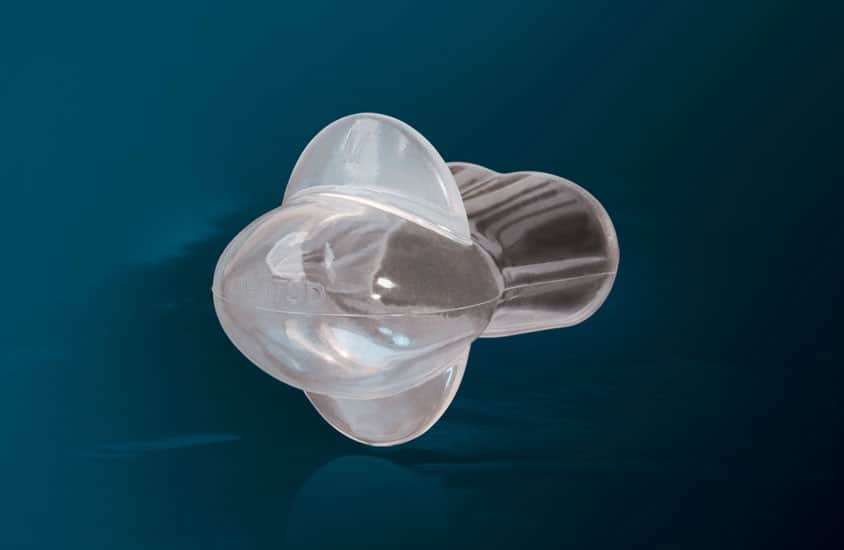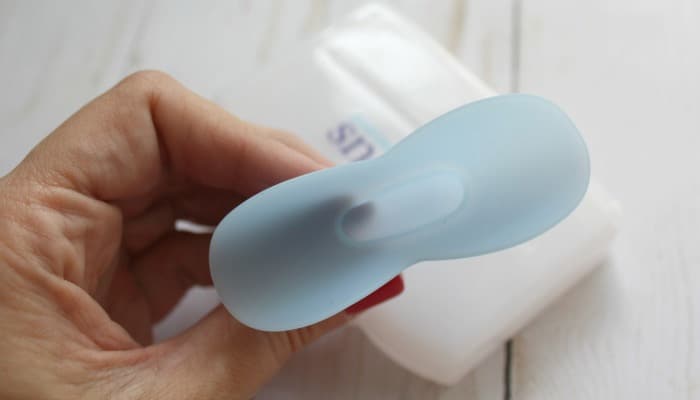Snoring is more than just a nuisance; it can have a serious impact on your overall health and well-being. The constant disruptions that occur as a result of snoring can lead to excessive sleepiness, difficulty concentrating, headaches, and throat pain.
In severe situations, snoring can lead to hypertension (1), gasping, choking, and inhibit breathing while sleeping. The snorer isn’t the only one affected, either; your partner can also be impacted by the noise, leading to sleep disruptions that can impact their well-being too.
If you or someone you love snores and you’re looking for a way to combat the problem, a tongue retaining device (TRD) may be the solution.
In this guide, we’ll take a closer look at TRDs, including what they are, individuals that can benefit from them, how to use these devices, and other pertinent information that can help you determine if it’s an option worth considering.

A tongue retaining device (TRD) (also called a tongue stabilizing device, or TSD), is an oral appliance that is used to treat obstructive sleep apnea syndrome (OSAS) and excessive snoring. It’s constructed of durable, yet flexible plastic material or silicone resin that is custom-fitted to the snorer's mouth.
A TRD resembles a mouth guard that might be used in sports or even a baby’s pacifier. It’s positioned near the lips and features a cavity in the center.
While tongue retaining devices do vary a bit in design and style, the basic premise is the same: the tongue is placed in a cavity at the front of the device, which creates a vacuum of sorts.
There are a few different types of snoring, however the most common is mouth snoring which is a result of the tongue falling back against the throat which restricts the airways. When a snorer tries to exhale, the soft tissues in the mouth vibrate which create a rasping, rumbling sound that we refer to as snoring.
The idea behind a TRD is that by pulling the tongue up and away from the back of the throat, snoring can be alleviated.
Anyone who suffers from snoring may be able to benefit from using a tongue retaining device. Most notably, people who snore as a result of the following problems:
Snoring, especially when it’s severe and chronic, can pose serious side effects that can impact so many facets of a snorer’s life, as well as their partners.
Tongue retaining devices can be an effective way to prevent the blockage of the airways, and therefore, reduce the effects of snoring.

While TRDs can help to reduce the effects of snoring, there are some potential issues that these devices could pose. While these issues are minimal, it’s important to be aware of them.
Most notably, adjusting to a tongue retaining device can be difficult. Many people note the adjustment period can be trying, which is understandable; the feeling of something being stuck in your mouth while you’re sleeping can be awkward and uncomfortable.
Soreness in the tongue is one of the most common complaints. The good news is, however, that most users report that within a few weeks, they’ve successfully adjusted.
Drooling is another problem that is often reported with TRD use. As the tongue is placed in the cavity at the front of the device and the mouth is essentially held open; This results in excessive saliva to accumulate within the mouth.
Unfortunately, there really isn’t a way to correct drooling, but rather, it’s something that those who wear TRDs become accustomed to.
Properly caring for a tongue retaining device is extremely important. If it isn’t properly cared for, problems can arise. Thoroughly cleaning it on a regular basis is the best way to care for this device.
Dirt, debris, and bacteria accumulate around a TRD, which can not only lead to unpleasant odors, but can also pose the risk of infection when worn.
To clean a TRD, it should be rinsed with hot water on a daily basis. Once a week, soak the device in a denture cleaning solution. Avoid using mouthwash to clean your device, as the alcohol in the mouthwash can dry out the material and damage your TRD.
When the device isn’t in use, make sure to place it in a container, and store the container in a cool, dry location. High heat and humidity can damage a TRD and welcome bacterial growth.
The cost of TRDs varies widely. The material the device is made out of, the specific design, and where it is purchased are all factors that can affect the cost.
High-end models can cost upwards of $500, which is quite an exorbitant amount. However, there are more affordable options. You can find high-quality, budget-friendly options that cost between $40 and $100.
Whether you’re a snorer or someone you love snores, there’s no doubt that you are affected by the disruptions the noise causes. A tongue retaining device may provide the much-needed relief that you are looking for.
While there are a few downsides to using this type of device, the benefits make a TRD a worthwhile investment.

Snoringsource.com is a participant in the Amazon Services LLC Associates Program, an affiliate advertising program designed to provide a means for website owners to earn advertising fees by advertising and linking to amazon(.com, .co.uk, .ca etc) and any other website that may be affiliated with Amazon Service LLC Associates Program.